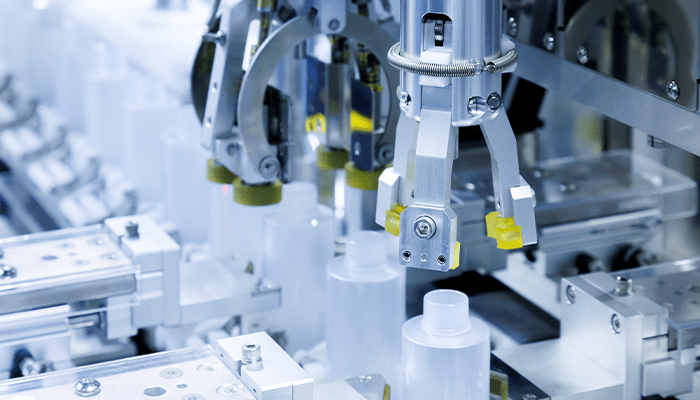
5 Big Manufacturing Trends to Watch in 2025
The manufacturing industry is changing fast. With record-breaking investments in new facilities, cutting-edge technology, and a push for smarter, more sustainable operations, there’s a lot to be excited about. But with change comes risk.
Manufacturers face challenges like cybersecurity threats and supply chain disruptions that could impact their bottom line. The good news? With the right strategies in place, businesses can stay ahead of the curve.
Manufacturing is changing fast. The right strategies can help protect your business from financial and operational setbacks. Contact us about our Operational Excellence Assessments.
Here are five key trends shaping manufacturing in 2025, and what you can do to manage the risks.
1. Tech is Transforming Manufacturing, But It’s Not Without Challenges
AI, automation, and smart machinery are revolutionizing production, making processes more efficient and sustainable. Some manufacturers are even using the metaverse to test new systems in virtual environments before rolling them out on the factory floor.
But there’s a catch. Adopting these technologies takes significant investment, requires workforce training, and can expose businesses to cybersecurity threats.
What You Can Do:
- Invest in employee training so your team can maximize the benefits of new technology.
- Weigh the costs and risks before implementing new tools.
- Strengthen cybersecurity measures to protect your digital infrastructure.
2. Cyber Threats Are Getting More Sophisticated
The more manufacturers rely on digital tools, the more attractive they become to cybercriminals. Ransomware attacks, where hackers lock companies out of their own systems and demand payment, cost businesses an average of $353,000 per attack.
How to Protect Your Business:
- Train employees to recognize phishing attempts and suspicious activity.
- Use strong security measures like multifactor authentication and network segmentation.
- Have a response plan in place so you can act fast if an attack happens.
And if you’re a defense contractor, there’s another reason to take cybersecurity seriously: the Department of Defense (DoD) has implemented the Cybersecurity Maturity Model Certification (CMMC) 2.0 program to ensure all contractors handling sensitive information meet strict cybersecurity standards.
CMMC 2.0 alignment requirements are:
- Assess current compliance: Evaluate existing cybersecurity practices against relevant CCM level requirements.
- Implement necessary controls: Address any identified gaps to meet the specified security practices.
- Prepare for assessment: Depending on the required CMMC level, schedule and complete the appropriate assessment – self assessment, third-party assessment, or government-led assessment.
Companies required to comply face several limitations and challenges due to stringent cybersecurity requirements:
- Increased Compliance Costs
- Restrictions on Non-Compliant Companies
- Ongoing Security Monitoring and Reporting
- Dat Storage and Access Limitations
- Potential Legal and Contractual Risks
- Implementation Challenges
While achieving CMMC Level 2 compliance is essential for defense contractors who handle CUI (Controlled Unclassified Information), the process comes with financial, operational, and technical limitations. Companies must strategically plan for compliance, ensuring they have the necessary budget, expertise, and infrastructure to meet the obligations.
3. Supply Chain Disruptions Aren’t Going Away
While we’re past the worst of the pandemic-related supply chain chaos, issues like geopolitical tensions, extreme weather, and cyberattacks are still causing delays. Shortages of key raw materials can slow production and drive-up costs.
How to Stay Resilient:
- Diversify suppliers so you’re not reliant on just one source.
- Use technology to improve supply chain visibility and track shipments in real time.
- Have contingency plans in place to manage potential disruptions.
4. Regulations Are Getting Stricter
AI, data privacy, and environmental regulations are tightening at the local, federal, and international levels. If businesses aren’t keeping up, they risk fines and operational setbacks.
What You Can Do:
- Stay informed about new regulations that affect your operations.
- Work with legal and compliance experts to ensure your business is following the rules.
- Proactively adopt sustainable practices to stay ahead of future requirements.
5. Labor Shortages Are Creating Workforce Challenges
The manufacturing sector is still struggling to attract and retain workers. The trend is driven by various factors, including.
- Aging Workforce: There is a significant portion of the manufacturing sector workforce nearing retirement age, leading to a loss of experienced workers.
- Skills Gap: There is a mismatch between the skills possessed by job seekers and those required in modern manufacturing roles.
- Increased Demand for Domestic Manufacturing: Initiatives to bolster domestic production have heightened the need for manufacturing workers; however, the labor pool has struggled to meet the increased demands.
And with rising wages and employee expectations shifting, it’s not longer just about hiring, it’s about retention and workforce development.
How to Stay Ahead:
- Invest in training programs to upskill your existing workforce.
- Use automation and robotics to fill labor gaps where possible.
- Partner with technical colleges and trade schools to create apprenticeship programs and ensure a steady pipeline of skilled workers. Many school are eager to work with local businesses to provide real-world training opportunities.
Manufacturing is changing fast and staying competitive means staying prepared. The right insurance and risk management strategies can help protect your business from financial and operational setbacks.
Our team specializes in helping manufacturers navigate risk and safeguard their future. Contact us today to discuss how we can support your business.
Related articles

Manufacturing is a cornerstone of the global economy, encompassing industries that transform raw materials into finished goods. From automotive and aerospace to electronics and consumer products, the...

A recent Forbes story on key topics for manufacturers going into 2025 mentioned several, but the overall theme was the advancement of AI technologies in the manufacturing industry. Following is a...

Innovation is essential for manufacturers – companies must continue to evolve through new product development, production improvement processes, or integrating cutting-edge technologies like...